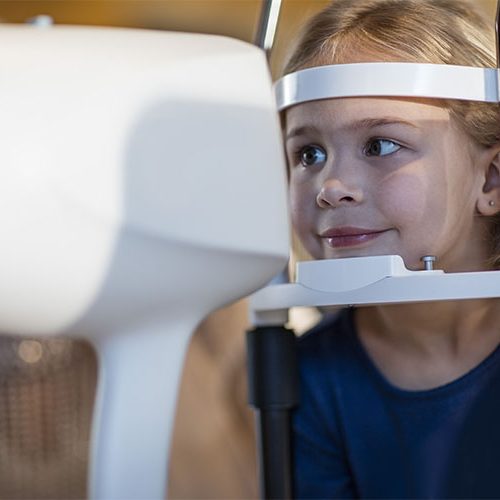Children today spend hours on screens, which can strain their eyes and impact learning, sports, and behavior. Common issues like lazy eye, misaligned eyes, and vision errors (nearsightedness, farsightedness, astigmatism) are best caught early. Regular eye exams help prevent permanent vision loss and support academic and social success.
Recommended Eye Exam Schedule
- Newborns: Checked in the hospital, especially if high-risk.
- Infants (first year): Screened during routine doctor visits.
- Age 3½: Visual acuity and eye health screening.
- Age 5: Vision and alignment check; see an eye doctor if problems found.
- After age 5: School and doctor screenings, especially if symptoms like squinting or headaches appear.
- Kids with glasses/contacts: Annual eye doctor visits.
Warning Signs
- Constant eye rubbing
- Light sensitivity
- Poor focusing or tracking
- Abnormal eye movement/alignment
- Redness, tearing, or white pupil
- Trouble reading, squinting, sitting close to screens
- Behavioral issues (inattentiveness, fatigue, avoiding reading)
Vision Correction Tips
- Let kids choose their frames
- Use plastic frames for young children
- Spring hinges for durability
- Elastic straps for active toddlers
- Polycarbonate lenses for sports
- Teach proper contact lens care
Sources
